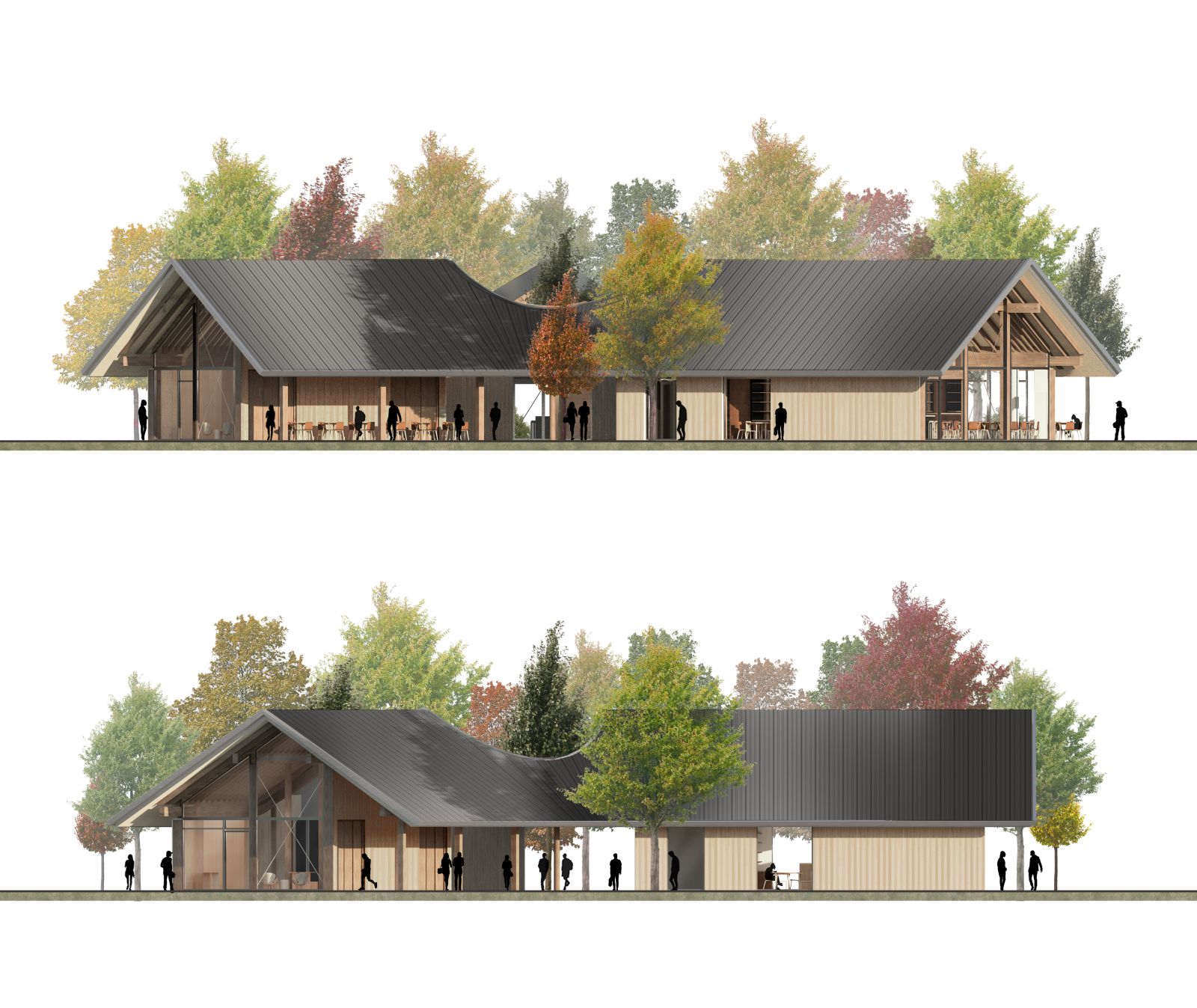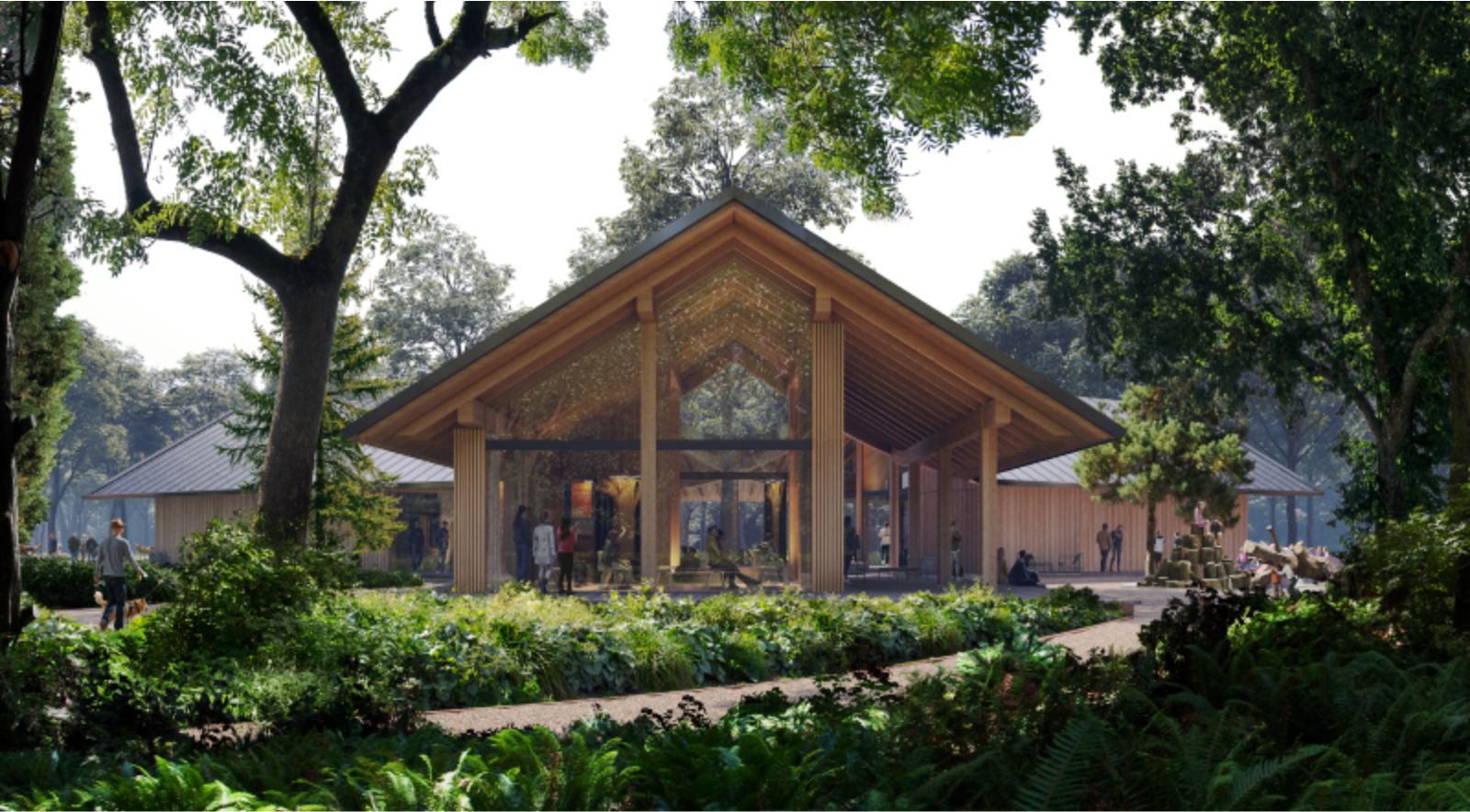Powerhouse Company and DELVA combine architecture and nature in their seamless design for a new visitor center for the Koekamp, which will play an important role as a gateway to the new Hollandse Duinen national park. It opens part of Koekamp to the public, a green expanse that reaches into the heart of The Hague and is home to deer and storks.
The visitor center, which has been commissioned by the Dutch forestry commission (Staatsbosbeheer), is expected to be completed in 2024. “For this grand entrance to a new national park, we have integrated architecture and nature. The landscape plays a leading role,” says Paul Stavert, Partner Architect Powerhouse Company.

A green history
Just a stone’s throw from The Hague’s Central Station, Koekamp is a survival from medieval times: a cattle field turned deer park (Philip the Good brought the first deer here). It became a public landscape, popular for walks, from the early 17th century. Later, it was partly landscaped in the English country house style by 19th-century landscape architect Jan David Zocher. Largely fenced off in more recent times, it has become more of a place to admire from a distance than to visit.
Today, Koekamp links the heart of the city and its train station to a network of green areas in The Hague and beyond, including the Malieveld, the Haagse Bos and the many miles of sand dunes along the coast. These diverse areas are now combined under the umbrella of a new national park, the Hollandse Duinen park. The new visitor center will be the park’s gateway, inviting people to explore part of the Koekamp, or venture further afield.

Natural highs
“We wanted to create an entrance that is not just a building, but a landscape. The balance between architecture, program, and design of the park is essential here. Our inspiration was the past. Instead of repeating history, we lovingly adapt it and put it back with respect for nature and within the design spirit of landscape architect Zocher,” says Steven Delva, DELVA Landscape Architecture | Urbanism
Koekamp is one of the four green spots of the Green Entrance: a new area of greenery around Central Station designed by DELVA, including KJ Plein (Koningin Julianaplein). In the plan, Koekamp will be bordered by the new Koninklijke Stadspark, a lush green park that will reveal the city’s diversity, as well as forming the gateway to the national park in the making. The contrast between these green landscapes in the heart of the city and the urban fabric is very pronounced, where the new visitor center will retain and enhance this contrast.

Koekamp will have stronger connections with the city and to the other green landscapes around it, including a new bridge which will better connect it to the park zone at Bezuidenhoutseweg. In addition to the existing entrance on the east side of the site, there will be an entrance in the form of a pedestrian bridge on the north side leading from the Malieveld. In the past, there was also an entrance on this side that connected to Koekamplaan: the royal, connecting road between Huis ten Bosch and Noordeinde Palace.
By adding this second connection, the grounds become part of the walk around Koekamp envisaged in line with Zocher’s ideas. The new Koekamp is characterized by ecological and ‘stinsen’ plants. The latter are bulbs that bloom during spring and are typical for country estates and forestlike areas.


Design for trees
The monumental trees on the site guide the design and will be retained as an integral part of the visitor’s experience. They determined the site and size of the new visitor center, where the architecture nestles among them. Three houses are positioned carefully in between the tree trunks under a unifying triple-winged roof that smoothly weaves between the green canopy and converges around a central, circular court that will accommodate another beautiful oak.
The result is a design that is perfectly integrated in nature and is weaves between it. The two public wings house an information center to the south, where visitors can learn about the landscape and its long history, and a restaurant to the north. The central circular court forms an informal outdoor meeting space, with room for activities such as a play area. The third wing accommodates the offices of the forestry commission, which also offers workshop space in an old coach house nearby.

Visitors will now be able to see and understand some of the foresters’ work. The buildings are constructed entirely in timber and glass. The buildings are constructed entirely in timber and glass. The gable end walls are completely glazed and transparent, offering views through to the trees on the other side, while the side walls are timber with grooved detailing.
This combination of façade materials – 50% wood, 50% glass – offers the greatest energy efficiency. The trio of structures rests on a floating wooden platform, surrounded by a looping pattern of paths evoking the organic pathways characteristic of Zocher’s work. Source by Powerhouse Company and DELVA and images Courtesy of Powerhouse Company.













